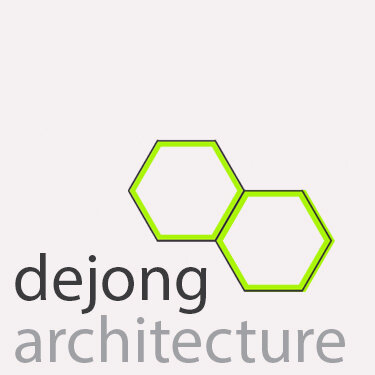Dejong Architecture Bees
We work in a industry where the expectations upon buildings (whether new or existing) are becoming greater. Of these, the requirements of energy efficiency due to climate change is probably the greatest in recent memory. The big North American push started with the adoption of LEED, with other less known certification programs following. We prefer Passivehaus because of the push to drive to net zero emissions, but all have their place. Really, all programs are geared towards best practise, and the economics really favour the long term building owners over the needs of the developer-in and out model.
Lets be honest, no-one wants to pay more than they have to for a product? And it didn’t seem to be an issue when there were less than 5 billion people on the planet. Now that we are globally just under 8 billion, issues like climate change and consumer driven economies are making us try harder. And while we cannot affect the first issue, we can definitely try our best with what we can affect.
Along with overpopulation, becomes the expanse of our cities, sprawling into farmland. Farmers have always worked hard and been at the mercy of things out of their control. Having to more with less is a multi-generational theme. Science of pesticides, fertilizers and genetics has helped but there will be an upper limit. Malthus identified the conflict between arithmetic increases of agriculture vs the geometric advancement of population growth in his essay in 1798. In short, the agricultural carrying capacity of the world has a limit that will be upon us sooner than we realize.
Malthusian Economics also called Malthusian Dilemma or Malthusian Catastrophe
With the expanse of our cities and use of pesticides the honey bee populations have been on decline. Honey bees are the great pollinators. Einstein claimed if the honey bees left the planet, society would only have 4 more years to live. Others claim that bees contribute only 9% to the agricultural output. Assuming the conservative reconciliation, I don’t think the world could do without 9% less food production.
This is a long and roundabout of introducing our next bit of research. Bees. While we are trying to make buildings as energy efficient as possible, we are also aware we are contributing to habitat loss for bees. We are extra sensitive to this reality as we live in an agriculturally intensive part of the world. Dejong Architecture has started to invest in hives to help offset in a very small way, the loss if bee habitat. And of course, because they are neat. Eventually we would like to have some rooftop bee hives on roofs of completed projects, but understand it’s not for every client.
The remainder of this blog will be to share our bee process and perhaps encourage others to try. We will continue to develop this Blog as the bees season develops. Thank you.
Bee Happy
There were two very useful businesses that are owed some credit:
Worker and Hive-Calgary
Hive World- Edmonton
April 11,2022. Purchased Two Beekeeper Starter Kits from Peavy Mart




